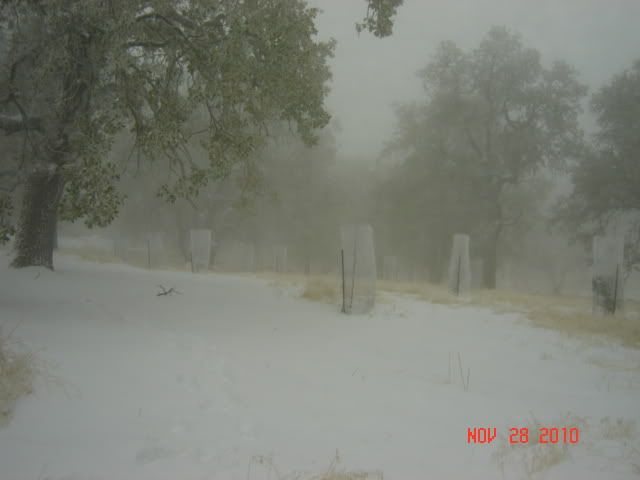I have built an 11 acre deer fence, and I plan on building one around ~7 acres here shortly. I have not used Tenax but I expect that the principals are similar.
The technique used here in Oregon for vineyards goes like this: Use a 6' metal mesh fencing product. The grid pattern is more dense towards the bottom to prevent smaller critters from getting in. Then a wire (14 gauge, high tensil) wire is string across the top of the posts from post to post. You can also install a tensioner on this wire to keep it tight. The corners have H braces or possibly two H braces if it is a very long run (e.g., > 400 ft or so. You'll have to convert that to metric

). The fence is 7 feet high when it's done. Gates get H braces on each side or if you can, incorporate them into the corners so that you don't have extra H braces. It is best to put the doors in the corners anyways because when a deer gets in, you'll have to chase him/her out and the best way to do that is to shoo them into the corner and out the doors. Down the length of the fence line we have a series of wooden posts (single ones, not H braces) every 100 ft, and then metal T posts every 20 ft between the wooden posts.
To construct it, pick your corners and then start building one H brace at one corner. You'll use the far corner (the corner that you're building towards) to line up the H brace posts - the more "in line" (straight toward the far corner) that you get the posts the better. You'll fasten fencing material to the H brace and then roll out the fencing to the other corner or an intermediate H brace (which will be necessary for abrupt elevation changes, for example). The fence material will then need to be stretched and attached to another H brace. To stretch it, I use a "come along" attached to a tractor. I am not sure how you would do this without attaching the come along to some large heavy thing. The locals here have a term for the stretching process: The fence should be "singing tight"; meaning that it will resonate when you tap it.
The wooden posts are typically 4"-5" treated posts that are 10 ft long. The metal posts are similar in length and have a spade on the bottom.
If you construct the fence in sections, it will give him for the deer to get used to it so they will be less likely to try and get in. If they are determined to get in, they will; especially if there is some resource that they're used to accessing. In any case, you'll need to slowly make it inconvenient for them to access the grounds where you would like to fence off. Then they will forget about going there and slowly stop trying to access it. If your forest is the only place around that has water, then you may continue to have issues with intrusions...
Anyways, hopefully I've provided some wisdom that could be of use.

 1
1












 ). The fence is 7 feet high when it's done. Gates get H braces on each side or if you can, incorporate them into the corners so that you don't have extra H braces. It is best to put the doors in the corners anyways because when a deer gets in, you'll have to chase him/her out and the best way to do that is to shoo them into the corner and out the doors. Down the length of the fence line we have a series of wooden posts (single ones, not H braces) every 100 ft, and then metal T posts every 20 ft between the wooden posts.
). The fence is 7 feet high when it's done. Gates get H braces on each side or if you can, incorporate them into the corners so that you don't have extra H braces. It is best to put the doors in the corners anyways because when a deer gets in, you'll have to chase him/her out and the best way to do that is to shoo them into the corner and out the doors. Down the length of the fence line we have a series of wooden posts (single ones, not H braces) every 100 ft, and then metal T posts every 20 ft between the wooden posts.

























 1
1




 1
1









